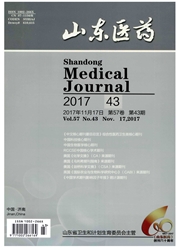

 中文摘要:
中文摘要:
目的构建带HA标签的晚期糖基化终产物受体(RAGE)不同功能段缺失体真核细胞表达载体,使其在前列腺癌细胞株PC-3中过表达并观察其定位。方法采用PCR方法扩增缺失不同功能段V/VC1的RAGE缺失体ΔV/ΔVC1序列,利用分子克隆技术将其重组于pcDNA3-HA载体中,利用PCR和测序鉴定克隆正确性;转染PC-3细胞,用Western blot法检测其表达,免疫荧光法检测其在细胞中的定位。结果 RAGE不同缺失体质粒经测序鉴定无误,并可在PC-3细胞中高表达,且经免疫荧光检测其主要在细胞质中表达。结论成功构建了RAGE不同缺失体的真核表达载体,转染PC-3细胞后呈高表达,其在PC-3细胞中主要定位于细胞质。
 英文摘要:
英文摘要:
Objective To construct eukaryotic expression vectors with HA-tagged receptor for advanced glycation end products (RAGE) with the deletion of domain V or domain VCj , and to make them overexpressed in the prostate cancer cell line PC-3 and observe their distributions. Methods Using PCR to amply the coding sequence of RAGE of full-length without the domain V or domain VC1 from the plasmid pEGFP-RAGE, and then it was'recombined into pcDNA3-HA vector by using molecular cloning technology. After being identified by PCR and sequencing, the vectors named ΔV/ΔVCl were transfected into PC-3 cells. The expression was detected by Western blot and the distribution was detected by immunofluo- rescence. Results The expression vectors named ΔV/ΔVC1 containing the coding sequence of RAGE without V or VCt domains were successfully constructed and confirmed by PCR and DNA sequence analysis. The vectors named ΔV/ΔVC1 were highly expressed and displayed a dominant cytoplasmic distribution in transfected PC-3 ceils. Conclusion The eu- karyotic expression vectors for RAGE without V or VC~ domains were constructed successfully, highly expressed in the transfected PC-3 cells, and they were mainly located in the cytoplasm of PC-3 cells.
 同期刊论文项目
同期刊论文项目
 同项目期刊论文
同项目期刊论文
 期刊信息
期刊信息
